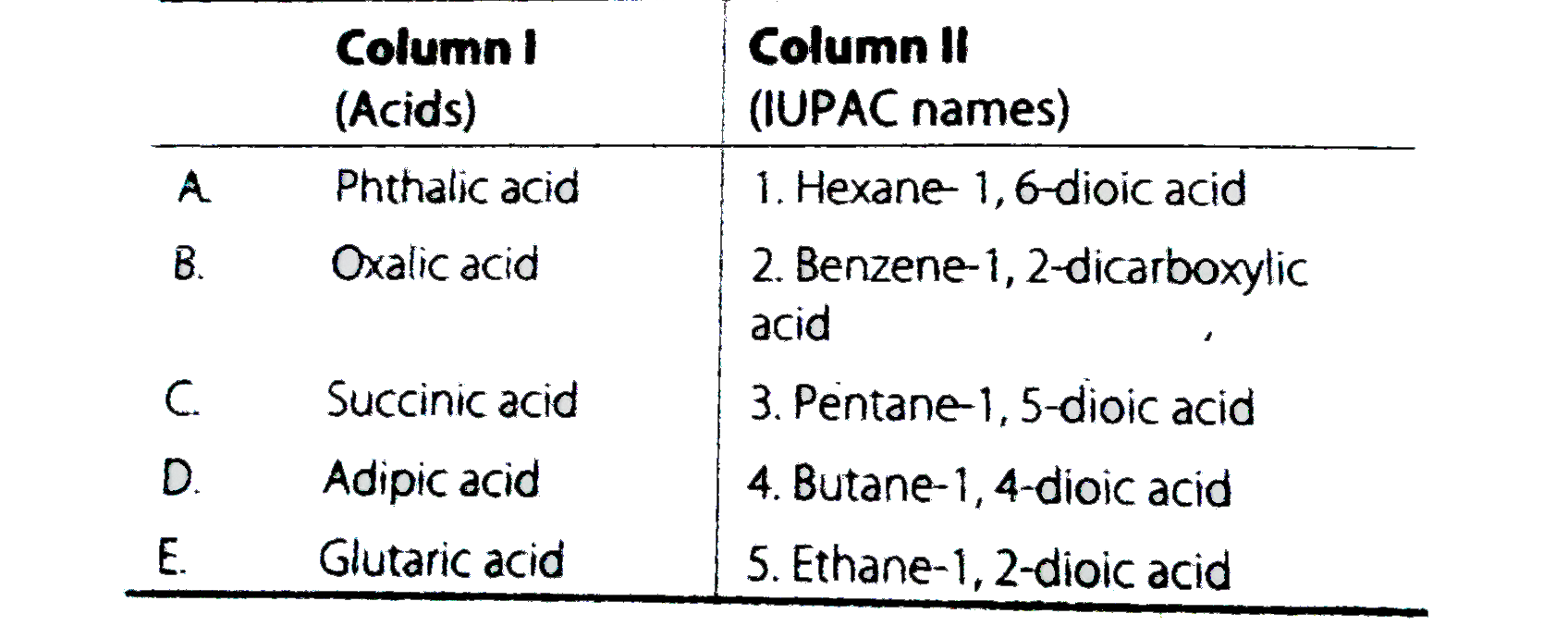Complete Solutions to Short Answer Type Questions of chapter ALDEHYDE, KETONES AND CARBOXYLIC ACIDS of Class 12 book with complete answers and questions
| Class 12 | CHEMISTRY |
| Chapter | ALDEHYDE, KETONES AND CARBOXYLIC ACIDS |
| NCERT EXEMPLAR | Short Answer Type Questions |
| Number Of Questions | 28 |
| Academic Year | 2023-24 |
Why is there a large difference in the boiling points of butanal and butan-1-ol ?
View SolutionWrite a test to differentiate between pentan-2-one and pentan-3-one.
View SolutionGive the IUPAC names of the following compounds.
(a)
View SolutionGive the structure of the following compounds :
(i) 4-Nitropropiophenone
(ii) 2-Hydroxycyclopentanecarbaldehyde
(iii) Phenyl acetaldehyde.
View SolutionWrite IUPAC names of the following structures

View SolutionBenzaldehyde can be obtained from benzalchloride. Write reactions for obtaining benzalchloride and then benzaldehyde from it.
View SolutionName the electrophile produced in the reaction of benzene with benzoyl chloride in the presence of anhydrous `AlCl_(3)`. Name the reaction also.
View SolutionOxidation of ketones involves carbon-carbon bond cleavage. Name the products formed on oxidation of 2, 5-dimethylhexan-3-one.
View SolutionArrange the following in decreasing order of their acidic strength and give reason for your answer.
`CH_(3)CH_(2)OH, CH_(3)COOH, ClCH_(2)COOH, FCH_(2)COOH, C_(6)H_(5)CH_(2)COOH`
View SolutionWhat product will be formed on reaction of propanal with 2-methylpropanal in the presence of NaOH? Write the name of the reaction also.
View SolutionCompound 'A' is prepared by oxidation of compound 'B' with alkaline `KMnO_(4)`. Compound 'A' on reduction with lithium aluminium hydride gets converted back to compound 'B'. When compound 'A' is heated with compound 'B' in the presence of `H_(2)SO_(4)`, it produces fruity smell of compound 'C'. To which family, the compounds 'A', 'B' and 'C' belong to ?
View SolutionArrange the following in decreasing order of their acidic strength. Give explanation for the arrangement.
`C_(6)H_(5)COOH, FCH_(2)COOH, NO_(2)CH_(2)COOH`
View SolutionAlkenes
 and carbonyl compounds
and carbonyl compounds  both contain a `pi` bond but alkenes show electrophilic addition reactions whereas carbonyl compounds show nucleophilic addition reactions. Explain.
both contain a `pi` bond but alkenes show electrophilic addition reactions whereas carbonyl compounds show nucleophilic addition reactions. Explain.
View SolutionCarboxylic acids contain carbonyl group but do not show the nucleophilic addition reactions like aldehydes or ketones. Why?
View SolutionIdentify the compounds A, B and C in the following reaction :
`CH_(3)-Broverset(Mg//ether)rarr(A)overset((i)CO_(2))underset((i)"Water")rarr(B)overset(CH_(3)OH//H)underset(Delta)rarr(C)`
View SolutionWhy are carboxylic acids more acidic than alcohols or phenols although all of them have hydrogen atom attached to a oxygen atom (-O-H)?
View SolutionComplete the following reaction sequence :
`CH_(3)-overset(O)overset(||)C-CH_(3)overset((i)CH_(3)MgBr)underset((ii)H_(2)O)rarr(A)overset("Na metal")underset("ether")rarr(B)overset(CH_(3)-Br)rarr(C)`
View SolutionEthylbenzene is generally prepared by acetylation of benzene followed by reduction and not by the direct alkylation of benzene. Think of a possible reason.
View SolutionCan Gattermann-Koch reaction be considered similar to Friedel Craft's acylation ? Discuss.
View SolutionMatch the common names given in Column I with the IUPAC names given in Column II.

View SolutionMatch the acids given in Column I with their correct IUPAC names given in Column II.

View SolutionMatch the reactions given in Column I with the suitable reagents given in Column II.

View SolutionMatch the example given in Column I with the name of the reaction in Column II.


View SolutionAssertion (A) Formaldehyde is a planar molecule.
Reason (R) It contains `sp^(2)` hybridised carbon atom.
View SolutionAssertion (A) compound containing -CHO group are easily oxidised to corresponsing carboxylic acids
Reason (R) : Carboxylic acids can be reduced to alcohols by treatement with `LiAlH_(4)`
View SolutionAssertion (A) The `alpha`-hydrogen atom in carbonyl compounds is less acidic.
Reason (R) The anion formed after the loss of `alpha`-hydrogen atom is resonance stabilised.
View SolutionAssertion : Aromatic aldehydes and formaldehyde undergo Cannizzaro reaction
Reason : Aromatic aldehydes are almost as reactive as formaldehyde.
View SolutionAssertion (A) Aldehydes and ketones, both react with Tollen's reagent to form silver mirror.
Reason (R) Both, aldehydes and ketones contain a carbonyl group.
View Solution
Short Answer Type Questions questions and complete solutions for chapter ALDEHYDE, KETONES AND CARBOXYLIC ACIDS of NCERT CHEMISTRY (ENGLISH) of Class 12